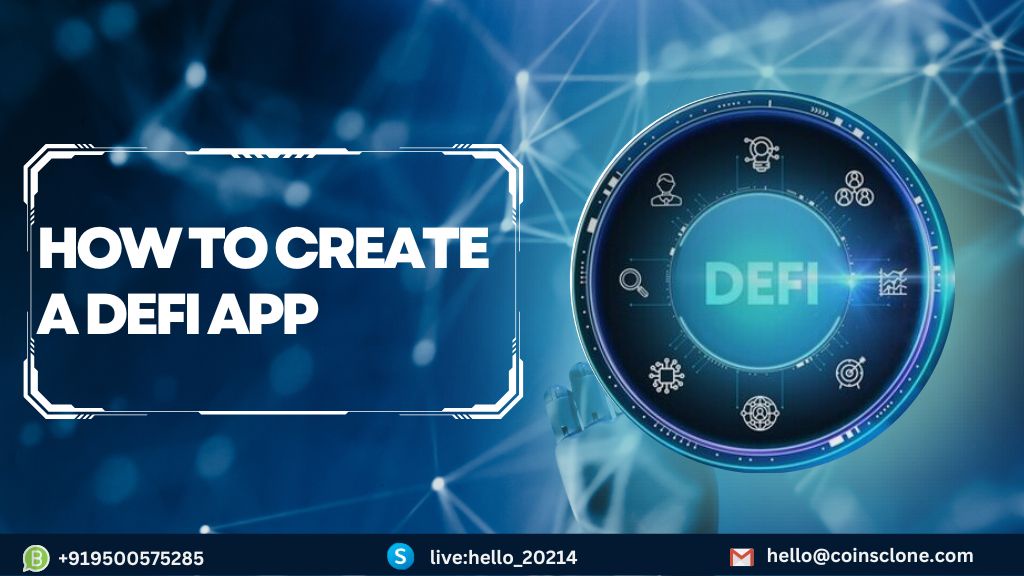Introduction
In the realm of finance, Decentralized Finance (DeFi) has emerged as a revolutionary force, promising to democratize access to financial services while eliminating intermediaries. One of the most exciting aspects of DeFi is its openness to innovation, allowing developers to create their own decentralized applications (DApps) tailored to specific financial needs. In this guide, we'll delve into the process of building your own DeFi app, from conceptualization to deployment, empowering you to contribute to the burgeoning DeFi ecosystem.
Understanding DeFi
Before diving into the development process, it's crucial to grasp the fundamental principles of DeFi. At its core, DeFi aims to replicate traditional financial services in a decentralized manner, leveraging blockchain technology and smart contracts. Key components of DeFi include lending, borrowing, decentralized exchanges (DEXs), yield farming, and liquidity provision.
Identifying Your DeFi App's Purpose
Every successful DeFi app addresses a specific pain point or caters to a particular niche within the financial ecosystem. Begin by identifying the problem your app will solve or the service it will provide. Whether it's facilitating peer-to-peer lending, enabling token swaps, or offering automated market-making, clarity on your app's purpose is essential for effective development.
Designing the Architecture
With a clear understanding of your app's purpose, it's time to design its architecture. Determine which blockchain platform will host your app—Ethereum remains the most popular choice due to its robust infrastructure and extensive developer tools. Consider whether your app will be permissionless or permissioned and select the appropriate consensus mechanism.
Choosing Development Tools and Languages
For building a DeFi app, you'll need proficiency in blockchain development tools and languages. Solidity, Ethereum's native language for smart contracts, is a prerequisite. Additionally, familiarize yourself with development frameworks like Truffle and libraries such as Web3.js for interacting with the Ethereum blockchain. Version control using Git and collaboration platforms like GitHub are invaluable for team-based development.
Writing Smart Contracts
Smart contracts form the backbone of any DeFi application, governing its core functionalities and interactions. Begin by drafting the smart contract architecture, defining the data structures and functions necessary for your app. Pay close attention to security considerations, implementing best practices to mitigate potential vulnerabilities. Thorough testing using tools like Truffle Suite ensures the robustness of your smart contracts.
Integrating Oracles
DeFi apps often require real-world data to execute their functions accurately. Oracles serve as bridges between blockchain networks and external data sources, providing reliable information such as asset prices, interest rates, and weather data. Evaluate various oracle solutions and integrate the most suitable one into your app's architecture, ensuring data integrity and reliability.
Building the User Interface (UI)
A user-friendly interface is paramount for driving adoption and engagement with your DeFi app. Design an intuitive UI that simplifies complex financial processes, making them accessible to users of all experience levels. Leverage frontend frameworks like React.js or Angular to develop responsive, visually appealing interfaces that seamlessly interact with your smart contracts via Web3.js.
Testing and Auditing
Thorough testing and auditing are indispensable steps in the development lifecycle of a DeFi app. Conduct comprehensive unit tests to validate the functionality of your smart contracts and simulate various scenarios to identify edge cases and vulnerabilities. Engage third-party auditing firms specializing in blockchain security to perform in-depth code reviews and penetration testing, ensuring the robustness and integrity of your app.
Deployment and Maintenance
Once testing and auditing are complete, it's time to deploy your DeFi app to the blockchain. Choose an appropriate deployment strategy, considering factors such as gas fees, transaction speed, and network congestion. Utilize deployment tools like Remix or Truffle to streamline the deployment process and monitor your app's performance post-launch. Regular maintenance and updates are essential to address emerging security threats and optimize the user experience.
Conclusion
Building a DeFi app is a challenging yet rewarding endeavor that empowers developers to redefine the future of finance. By following the steps outlined in this guide—from conceptualization to deployment—you can create a unique and innovative DeFi application that contributes to the growth and decentralization of the financial ecosystem. Embrace the ethos of DeFi, foster community collaboration, and embark on a journey to revolutionize finance through decentralized innovation.


No comments yet